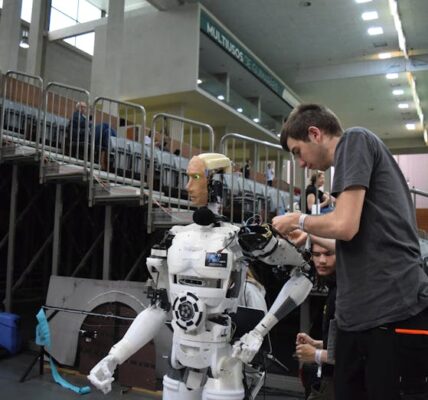Mastering Scale AI Prompt Engineering: A Comprehensive Guide
In the field of artificial intelligence, scale AI prompt engineering stands as a critical skill set for developing intelligent systems that can interpret and respond to user input effectively. This guide will explore the intricacies of prompt engineering within the context of scaling AI applications.
Understanding the Basics of Prompt Engineering
Prompt engineering is an art that involves crafting inputs that trigger AI systems, like machine learning models or chatbots, to produce the desired output. It’s a delicate balance of language, context, and knowledge of the system’s capabilities. By refining prompts, engineers can greatly influence the quality and relevance of an AI’s responses.
The Role of Prompt Engineering in Scaling AI
As AI systems are scaled to accommodate larger user bases and more complex tasks, prompt engineering becomes increasingly significant. It ensures that these systems can handle a diverse range of inquiries without faltering, thus maintaining a high standard of user interaction.
Effective prompt engineering is key to unlocking the potential of AI in various applications, from customer service chatbots to sophisticated virtual assistants. It’s not just about the initial design but also about ongoing refinement and adaptation as the AI encounters new data and scenarios.
Best Practices for Scale AI Prompt Engineering
To achieve the best results in prompt engineering, certain practices are essential:
1. Know Your AI’s Capabilities and Limitations
Understanding the strengths and weaknesses of the AI system at hand is crucial. This knowledge allows for the creation of prompts that play to the system’s strengths while avoiding areas where it may struggle.
2. Contextual Awareness is Key
Prompts should be designed with an awareness of the context in which they will be used. This includes the user’s potential needs, the environment in which the AI operates, and the type of interaction expected.
3. Continuous Testing and Refinement
Prompt engineering is not a one-time task. It requires ongoing testing and tweaking to ensure that the AI continues to respond appropriately as it scales.
4. Leveraging Data for Improved Prompts
Data analytics can provide insights into how users are interacting with the AI. This information can be used to refine prompts and improve the overall user experience.
Advanced Techniques in Prompt Engineering
For those looking to delve deeper into the technical side of prompt engineering, several advanced techniques can be employed:
Machine Learning Optimization
Using machine learning algorithms, engineers can automate the process of prompt refinement, allowing the AI to learn from user interactions and adjust its prompts accordingly.
Natural Language Processing Tools
Natural language processing (NLP) tools can be used to analyze and understand user input, leading to more effective and nuanced prompts.
User Feedback Loops
Incorporating user feedback into the prompt engineering process ensures that the AI system remains aligned with user expectations and needs.
Challenges in Scale AI Prompt Engineering
Scaling AI systems with effective prompt engineering is not without its challenges:
Navigating Ambiguity and Complexity
AI systems must be capable of handling ambiguous user input and complex scenarios without compromising the quality of interaction.
Maintaining Consistency Across Scales
As AI systems scale, maintaining consistency in responses becomes a formidable task, requiring careful planning and execution.
Ensuring Ethical and Unbiased Prompts
Prompt engineers must be vigilant to avoid introducing bias into AI systems, ensuring that prompts do not perpetuate stereotypes or unethical behavior.
In conclusion, scale AI prompt engineering is a pivotal component of successful AI deployment. By following best practices and overcoming the inherent challenges, engineers can create AI systems that not only scale effectively but also provide meaningful interactions with users.







